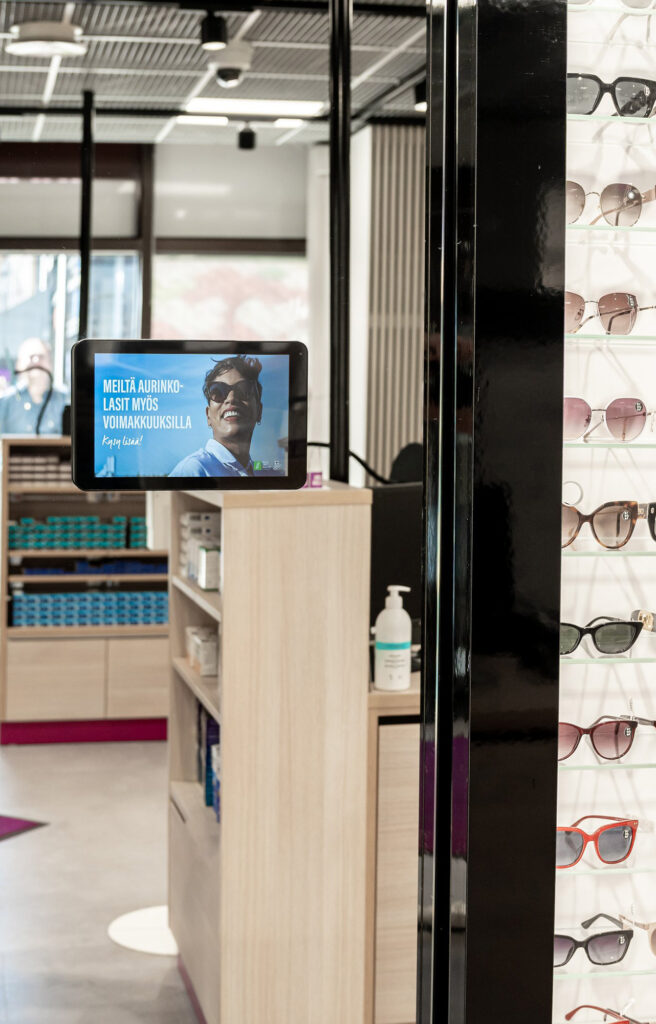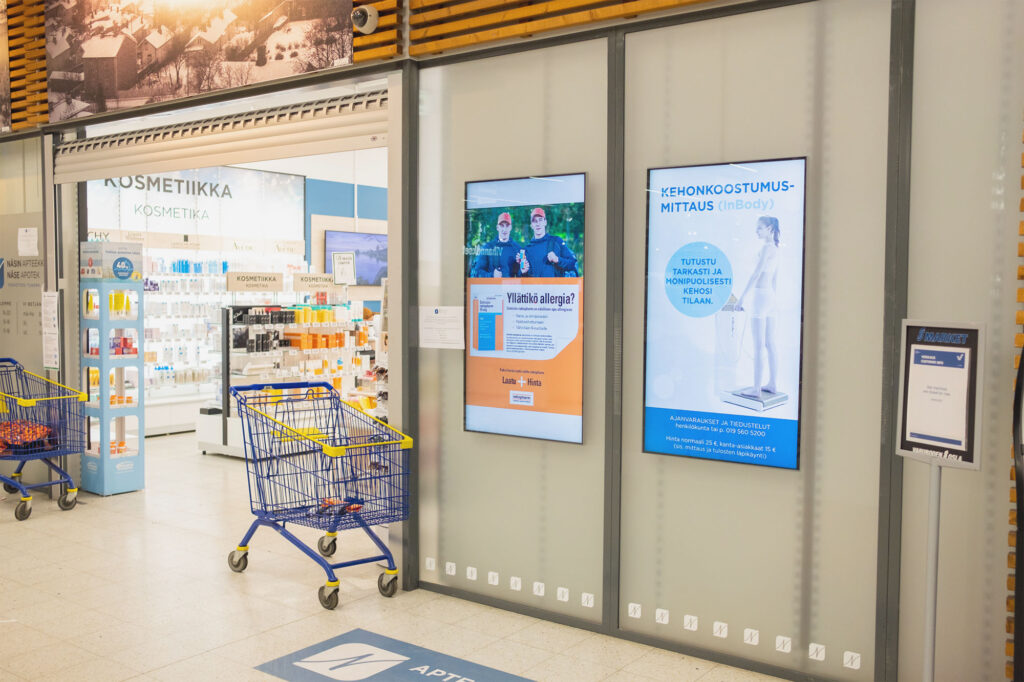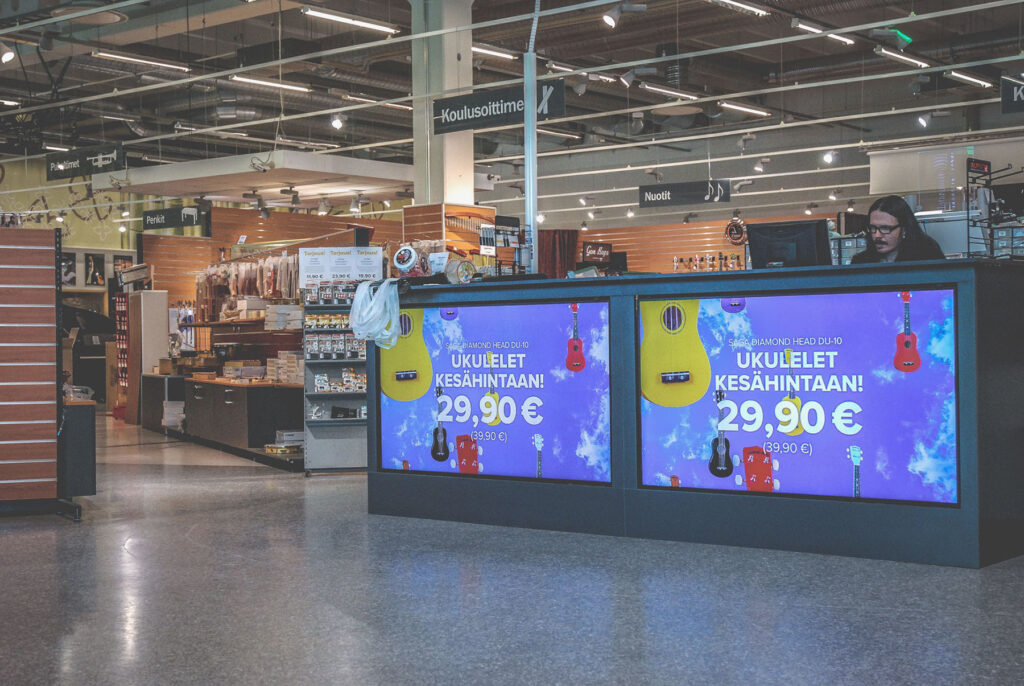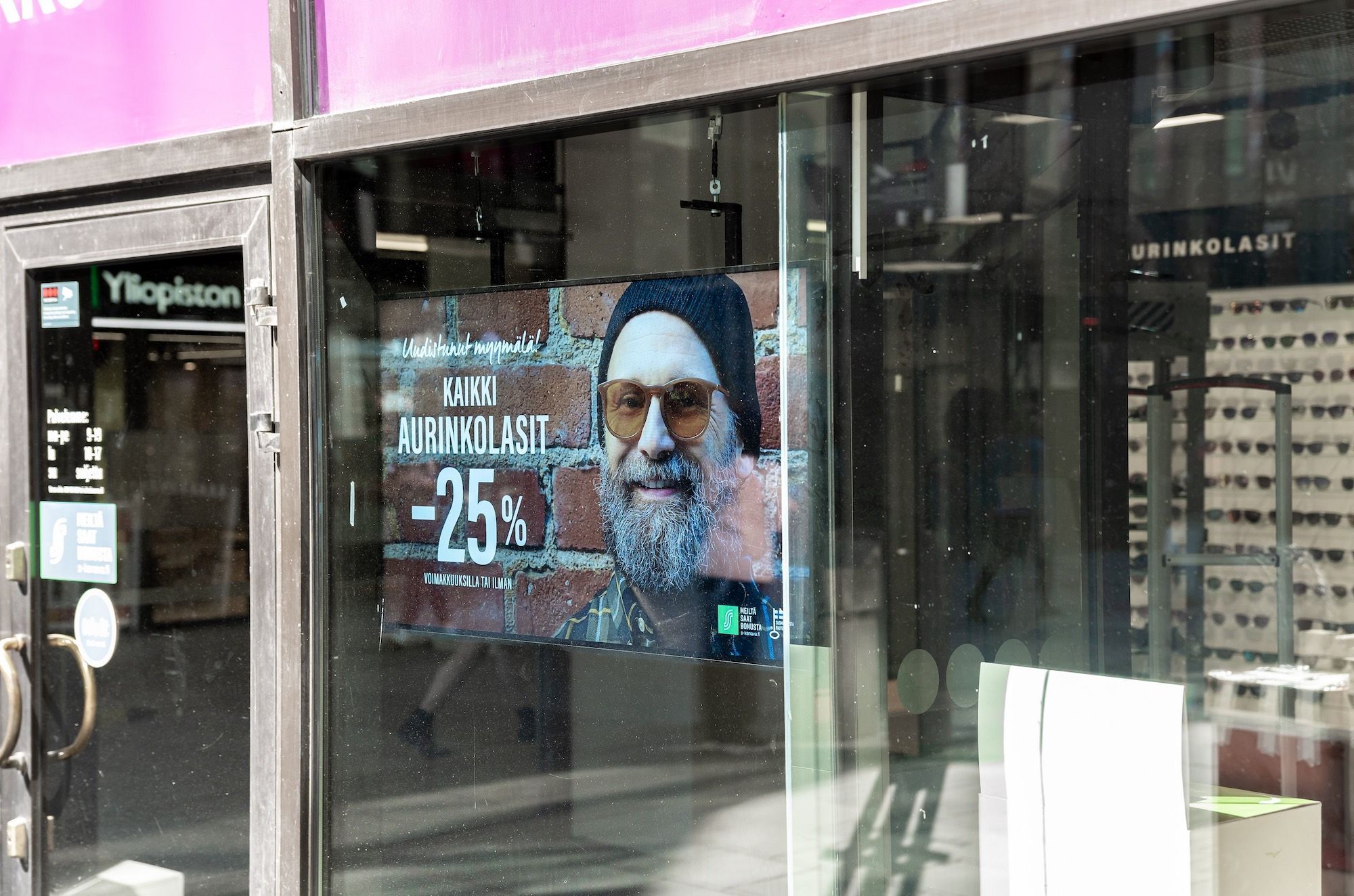First, consider these basic things: what is the goal of the digital signage and what kind of content do you want to show? Based on these two (perhaps even simple) questions, the installation locations and placement of the digital screens should be chosen. This way, the displays correspond to the intended use for which they were purchased.
Place the screens in visible places
Installing screens here and there without planning is almost the same as drawing a lottery ticket and waiting for the best. You shouldn’t leave the success of your project to chance. Even if your content is great and your digital screen is top-notch, but the location of the screen is wrong, there’s no point in waiting for lottery wins. The screens need to be in visible places so that they are noticed, and so that the location supports the content being presented.
Pay attention to customers’ routes and viewing distances
When planning where to place your screes, step into your customer’s shoes for a moment. For example, if you are purchasing displays for a store, walk through the customer’s path from the outside to the parking garage, up the escalators into the store, and from the aisles to the checkouts. What points along the path are potential locations for displays? And what kind of content would be useful to show during the customer’s journey?
Make sure that there is an unobstructed line of sight to the planned installation locations from the passageway. Also, make sure that the screens are visible from as far away as possible.
Predicting customer behavior can be tricky, so data generated by analytics can also be used to support planning. Spatial analytics provide real-world information about a store’s visitor flows; how customers move around the store, where they spend time, and for how long.

Take advantage of the standing stops
A good place to install an info screen is where people stop or spend time. These include elevators, entrances, waiting areas or checkouts. In standing stops, customers often have time to stay and watch your content for a longer period of time. This is therefore a great opportunity to grab the customer’s attention and communicate about your services or products.
Make the customer experience smooth
Remember that displays are for your customers, not for you. Consider where screens add value to your customers. Digital signage screens placed near entrances can guide and direct your customers, inform them about your new services, or remind them of current, seasonal products. smooth
Screens placed next to products can also act as digital product cards and provide additional information about the products. In addition to making it easy for your customers to shop, you also save staff time as the displays do the service work for you.
Read more about how MediaCloud makes content management easier.
Promote sales
Most purchasing decisions are made in stores, so displays placed at the ends of shelves and at service counters can generate significant additional sales. Digital screens located near products attract customers to make impulse purchases, for example through tactical product advertising.
The end shelves are also an excellent place to showcase new products located next to the screen, implement brand communication and thus influence customer images. In the shop window, the screen acts as a pull-in point and attracts customers into the store.
Also read how advertising displays support campaign sales in Silmäasema stores.



Avoid the most common stumbling blocks in the placement of digital signage screens
Once you have selected great and visible placement locations for your screens, you still need to rule out technical issues. Make sure that the availability of electricity and the network does not cause problems, and that there are no reflections on the screens from windows or store lighting. Also make sure that the screens are not hidden behind a corner or pillar, for example.
The next step is to consider the height and tilt of the screens – yes, these also matter. A very common mistake is to place the screens too high, leaving them unnoticed by people. The best mounting height is at eye level. The screens should be at eye level and always tilted towards the viewers.
In summary, remember at least these:
- Ensure electricity and network connection for the displays
- Avoid blind areas during installations
- Place screens at eye level
- Tilt the screens slightly towards the viewers
Elegant end result by integrating
Current digital screens are already very thin and bring a modern look to the store. You can add the finishing touch by integrating the displays into furniture or framing them to match the look of your business. Screens embedded in furniture are stylish and blend beautifully into the interior of the store.
There are many different options for mounting and installing displays. FirstView’s professional team can recommend the right options for you, help with planning and implementation. Ask more about solutions!

Also read these when you’re thinking about purchasing digital signage screens:
Although digital screens look like regular televisions, they actually differ greatly in their features. Read what to consider when purchasing a device:
Blog: Why doesn’t a basic TV work as a digital signage display?
Purchasing digital signage displays starts with defining your goals. You can get the most out of your display when you know the purpose of the display, its installation location, and its content.




